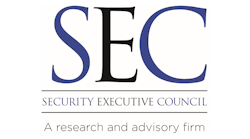Sage Conversations: Shhhh: Interdependencies are a Good Thing
Over the last year I have been studying how different risk and security organizations approach the value challenge. And it is a challenge. With resources at a minimum, Security Executives tell me they have a difficult time spending precious investment dollars on highly focused assessments that will provide them the data they need to drive the value equation or the optimization approach. Ironically, they admit, the odds are high, with the right assessment, the monies saved and the process improvements realized would more than pay for the assessment. However, it will also point to the need for change. And change is a leadership challenge.
Imagine you are an integrator serving a major port in the United States. Your main focus is to ensure you understand how to drive value and mitigate risk for your client...right?
You would never want to propose a technology solution unless you were able to define the objective.
So some key questions come to mind:
- Who is the customer to the port?
- What are the value drivers that motivate this customer to use this port?
- Who influences the customer experience and the satisfaction of those value drivers?
- What risks would upset or disrupt this experience?
- How can these risks be mitigated while supporting the original customer value drivers or, better, enhancing them?
- What leverage do I have internally or externally to reduce my overall expenditure while maintaining my ability to do the above?
- How will I measure all of this?
This is the next generation of the security industry; taking the tools and services you sell today and turning them into data aggregators that inform, measure and drive organizational resilience.
But how do you learn to do this? I imagined a scenario where your customers, their risk consultants, a business process optimization professional and you, the integrator, worked together on a table top exercise to do just that. I must admit, I never thought that could be possible until I talked recently with Francis D'Addario, an Emeritus Faculty Member of the Security Executive Council.
D'Addario has been dealing with the value question since his days as a key security executive with well-known companies such as Starbucks and the Southland Corporation. He is well known in the industry for his thought leadership in cross-functional protection and profit improvement methodologies.
To meet this challenge and this need, D'Addario has been one of the key drivers of the Security Executive Council’s Next Generation Security Leader Program; a program meant to take current leaders and their teams to the next level of value in their organization. This tuition-based program will be offered on March 4 at The Great Conversation in Security event in Seattle, Wash.
I asked D'Addario whether this program should include solution providers including consultants and integrators. "The answer is 'absolutely,'" he said. "Successful course completion requires a proof point exercise wherein security leaders and solution providers collaboratively articulate the value of a particular capital investment or rendered service in tangible and intangible terms. All participants will come away with new ideas to calculate the value of their contribution. "
More importantly, he said, it could effectively transform the baseline of value for the interdependent relationships within the security ecosystem. "Collaborative partners are able to articulate their mutual return on investment," he said. "Collaborative solution capabilities translate to confidence in a persistently uncertain risk environment. All connect to brand loyalty and stickiness which is a central theme for resilience and successful continuity of operations." And ultimately drive the performance metrics that undergird the value of a relationship.



